Conditions & Treatment Options
PMA offers advanced, targeted and minimally invasive procedures that can reduce or remove your pain without the need of surgery. These treatments are individually paired with patients to give them the right relief for their conditions.
Conditions
There are a number of medical conditions that can be successfully treated to alleviate reoccurring and persistent pain. Below are descriptions of some of the common spinal conditions that can lead to debilitating pain. If you are currently suffering from one of these conditions or would like to know more about treating your pain, complete our quick Self Evaluation and start a discussion with your doctor today.
Cervical Radiculopathy

This condition may cause pain, numbness, and weakness which may involve the neck, shoulders, arms, and hands. These symptoms result from irritation or compression of one or more spinal nerves.
Watch Video CloseComplex Regional Pain Syndrome

Formerly know as RSD-Reflex Sympathetic Dystrophy. This is a complicated collection of symptoms usually involving an arm or leg. Symptoms may come on after a traumatic injury or surgery in that extremity.
Watch Video CloseDegenerative Disc Disease
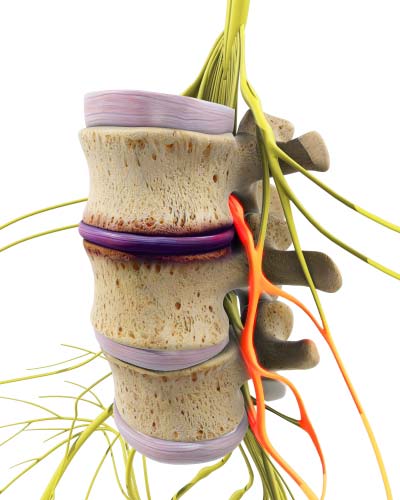
The disc the spacer that separates the vertebral bones of the spine. As we age, these discs may breakdown, dry out and shrink. Although this process ¡s a normal part of aging, when it ¡s accompanied by arthritis, spinal stenosis, or disc herniation, it can place pressure on nerves and be painful.
Watch Video CloseFacet Joint Syndrome
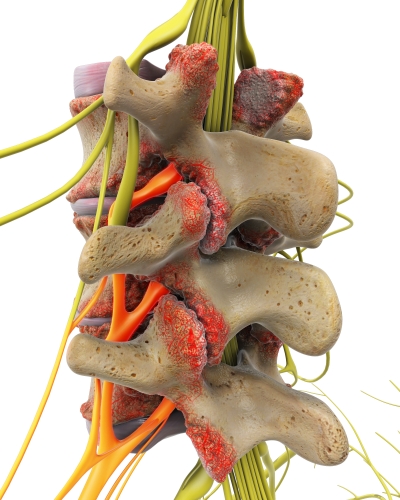
The facet joints may become painful when injured or stressed with the degeneration of everyday wear and tear. These joints are present and may cause pain in the neck, low back, or rarely in the thoracic region. Treatment may include PT or injections.
Watch Video CloseHerniated cervical or lumbar disc

The spinal discs are made up of a inner gel-like substance surrounded by a tough outer wall call the annulus. When the gel-like center pushes through a weak area in the annulus it can irritate or compress a spinal nerve as it leaves the spine at that level. That process can cause pain, numbness/tingling, or weakness in the part of the arm or leg supplied by that nerve.
Treatment can include rest, medication, physical therapy, and epidural steroid injections. Occasionally surgery is needed to remove the herniated portion of the disc.
Watch Video CloseChronic Knee Pain

Knee pain is usually effectively treated with physical therapy, anti-inflammatory medications, or injections into the joint itself. Sometimes arthroscopic surgery or even total joint replacement is required.
When these treatments give inadequate relief or if a person has other medical problems that prevent surgical treatment, it may be appropriate to consider blocking the pain from the knee joint by performing a genicular nerve block. While the nerve block will help determine the source of the pain, it may only provide short term relief. In that case, a genicular nerve ablation, using radiofrequency neurotomy, can be used to provide longer term relief.
Watch Video CloseLumbar Radiculopathy (Sciatica)
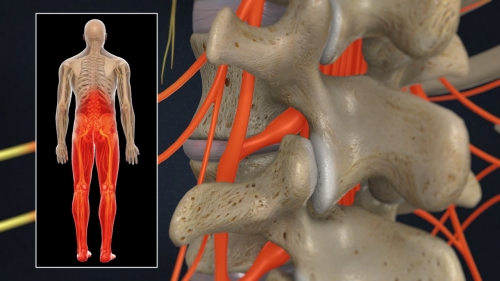
This condition involves pain, numbness, and weakness in the low back, hip, buttocks, and leg into the foot. It is the result of irritation or compression of one or more spinal nerve roots in the lower back.
Watch Video CloseSacroiliitis

The sacroiliac joint is formed where the lower spine and pelvic bones connect. Inflammation of one or both sacroiliac joints can cause pain in the low back and buttock area. It can be difficult to diagnose and is often mistaken for other causes of pain. Treatment may include physical therapy, medications, or an injection into the joint.
CloseSpinal Stenosis
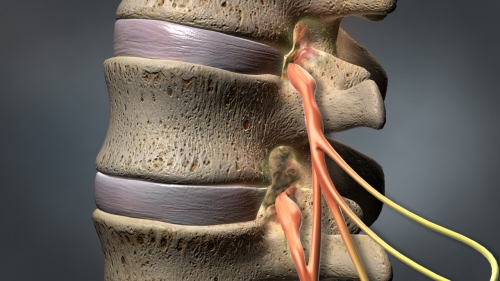
Spinal stenosis is a narrowing of the bony spaces through which the spinal cord and spinal nerves pass. The stenosis can be in the central canal (central stenosis) or in the segmental openings which contain the spinal nerve roots. This can be caused by arthritis, or bone spurs. When these nerves become crowded or pinched they can become inflamed and cause pain, numbness, and weakness.
Treatment can include medications, physical therapy, and spinal injections to reduce inflammation and pain. Persistent symptoms may require surgery to give the nerves more room.
Watch Video CloseSpondylolisthesis

Spondylolisthesis can occur when a weakness in the moveable joints in the spinal segments (facet joints) allow one vertebrae to slip forward out of normal alignment. This can result in back pain from the weakened joints or arm or leg pain from the spinal nerve at that level which can be inflamed and crowded due to the malalignment of the vertebral bones.
Treatment can include physical therapy to strengthen the muscles and spinal injections to address the inflamed spinal nerves or the painful facet joints.
Watch Video CloseSpondylosis

Spondylosis, also called osteoarthritis, can affect any area of the spine. It is a degenerative process often the result of everyday wear and tear. It can cause pain and stiffness in the spine. Sometimes spondylosis can cause a narrowing of the spinal canal known as spinal stenosis.
Watch Video ClosePiriformis Syndrome

Piriformis Syndrome is an uncommon muscular condition caused when the piriformis muscle stays chronically tight or in spasm. The piriformis is a flat, band-like muscle located in the buttocks. The sciatic nerve passes near or through the muscle so patients can experience hip, buttock, and/or leg pain. Treatment can include stretching, physical therapy, anti-inflammatory medications and trigger point injections into the muscle.
Watch Video CloseTreatments
PMA offers a variety of treatments to help manage and remove chronic pain. These treatments are categorized as injections, pain blocks or advanced treatments. Below you will find detailed descriptions and animated overviews of these procedures. If you would like to know more on what to expect during your PMA appointment, click the link below.
What to ExpectInjections
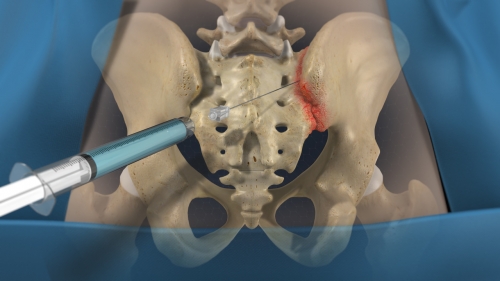
Steroid Injections provide pain relief by reducing the inflammation of nerve roots. A steroid along with an anesthetic are injected into the affected area. While steroid injections will not correct a preexisting condition, they can greatly reduce the level of pain you are experiencing. They are routinely given in a series of three, generally about 2 weeks apart. If pain is improved, further injections may not be required.
View Types of Steroid Injections CloseTypes of Steroid Injections






Pain Blocks
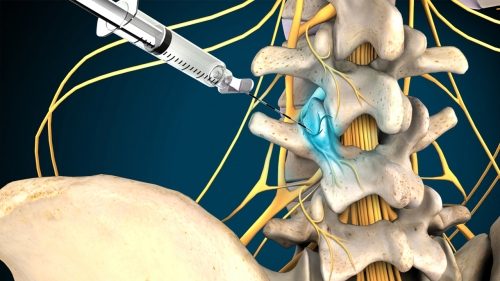
In certain conditions, nerves become aggravated and involved in a constant transmission of pain signals to the brain. Pain blocks can be used to disrupt this communication and can provide dramatic and long-term pain reduction.
Blocks are usually performed under X-ray (fluoroscopic) guidance. Following a local anesthetic to numb the skin, a contrast dye is injected to identify the painful areas. An anesthetic and anti-inflammatory medicine mixture is then injected around the affected nerves to block pain signals from reaching the brain. Blocks may be repeated weekly until the pain subsides. In some cases, these pain blocks may be used as a bridge until a more permanent procedure can be performed.
View Types of Pain Blocks CloseTypes of Pain Blocks




Advanced Treatments

Innovations in pain management have provided exciting new options for patients suffering from persistent pain. Radiofrequency, electric stimulation and other advancements offer continual pain relief through self-regulated treatment delivery.
View Types of Advanced Treatments CloseTypes of Advanced Treatments


